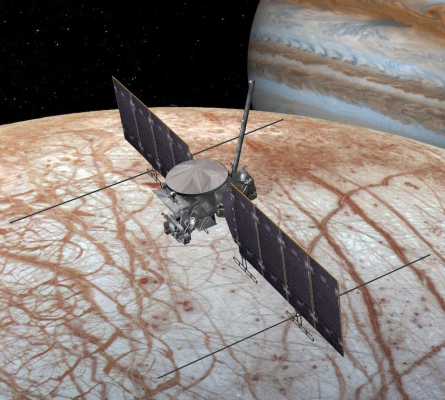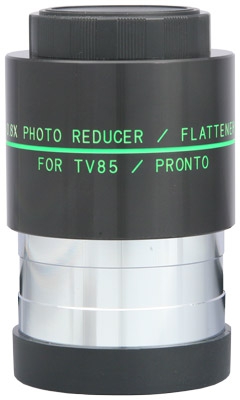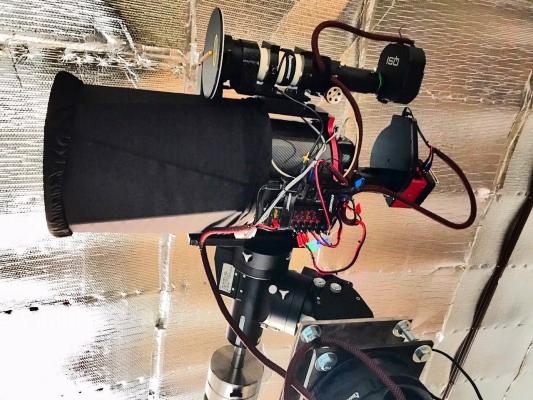Tele Vue-76: Imaging New Mexico Skies!
Brian Paczkowski has been employed by NASA/Jet Propulsion Laboratory in Pasadena, California since 1983. Some of his work includes the Galileo Mission to Jupiter and the Cassini Mission to Saturn. He is currently the Europa Clipper Science Manager.
Every clear night he images with his Tele Vue-76 installed at a remote observatory located at Dark Sky New Mexico (DSNM). He dedicates his Instagram wall of astroimages, “to my love of astrophotography.”

Located in the northern regions of Ursa Major and 12-million light-years from Earth, the two prominent galaxies in Brian’s image are Bode’s Galaxy (M81) and The Cigar Galaxy (M82). They are joined by NGC 3077 (an elliptical galaxy slightly further away) in the upper-left corner. All three are gravitationally interacting members of the M81 Group of Galaxies. This wide-field image shows foreground dust in our own galaxy covering the starscape.
In the close-up crop below, the intervening dust is not emphasized in processing. The yellowish core of M81 indicates an older population of stars while the red “spots” are from glowing hydrogen gas excited by ultraviolet light from newly formed young giant stars.

Brian grew up in Northeast Pennsylvania. His interest in astronomy began, as he puts it, using a cheap 4.5” Newtonian. He tells us how he went from this first scope to Europa Clipper Science Manager at NASA / JPL.

I grew up during NASA’s Gemini and Apollo missions and was always interested in the planets and the universe. I attended Villanova University and received my B.S. degree in Astronomy where I had the opportunity to operate telescopes to perform stellar photometry and modeling and later attended Ohio State University for graduate studies. I was hired by Jet Propulsion Laboratory as an Imaging Photoscientist to work on the Galileo Mission to Jupiter. At JPL, I’ve been working on outer planet missions to Saturn and Jupiter for the last 38 years.
Most recently, I’m working on the Europa Clipper Mission to explore Europa from its exosphere to its interior. There’s 10 science instruments working collectively to explore the habitability of Europa and its ingredients for life, including water, chemistry, and energy. These instruments will characterize Europa’s ice shell and ocean, understand its composition and geology. There’s even an Ice-Penetrating Radar instrument to probe the ice shell and hopefully “see” Europa’s ocean.
Brian has been a member of the Los Angeles Astronomical Society (LAAS) and had been doing astrophotography from their Bortle 3-4 dark sky site. Over the past 6-years he has assembled a collection of astrophotography equipment with the goal of setting it up at a permanent remote observatory located at a truly dark sky site. He eventually teamed up with fellow LAAS member Robert Brothers to share a pier at DSNM using their shared equipment.
Brian and Robert’s equipment setup at DSNM (above -image provided by Brian Paczkowski). Equipment list from top to bottom:
- Tele Vue TRF-2008 0.8x Reducer/Flattener converts TV-76 to 380mm f/5.0.
- QSI 683 CCD camera with Astrodon LRGB Ha OIII SII filters
- Alnitak Flat Field panel
- ATIK 16200 CCD camera
- ATIK 2″ Filter Wheel with Chroma LRGB Ha OIII SII filters
- Spike-a-Flat Field panel
Brian tells us that he chose the Tele Vue-76 scope for its short focal length, excellent APO optical system with negligible chromatic aberration present, and its high-quality build. We were happy to hear that Brian’s expectations were met. However, his stunning images were a surprise even to us! He tells us “I’m also impressed with what I can do with the TV-76, definitely a great scope!”
Following is Brian’s image of the Horsehead (Barnard 33 or IC434) silhouette at center and orange Flame Nebulae (NGC 2024) at left. They are separated by the bright blue supergiant star Alnitak, the easternmost star of Orion’s Belt. In fact, the “Flame” is “lit up” by Alnitak with the appearance enhanced by dark “branches” of light-absorbing gas in the nebula. As for the Horsehead, its appearance is due to the three-star system Sigma Orionis “above” the “horse (bright star along a line through the horse’s neck and head). It causes hydrogen gas to glow behind a dark concentration of dust that has the distinctive appearance of a horse’s head.

Next, Brian targeted the Pelican Nebula (IC 5070). It is part of the same ionized cloud of hydrogen gas as the more “famous” North America Nebula (NGC 7000). They appear as two objects because of an intervening cloud of gas that absorbs the light of the nebula behind it.

To perform data acquisition from Southern California, Brian logs into his observatory computer system at the remote site and uses Sequence Generator Pro (SGP) to control the telescope, mount, and cameras and to schedule all of the image data recording.
Acquisition is performed every clear night. Image processing of the data is done using the powerful astronomy image processing software, PixInsight. Photoshop is also used in a limited capacity for final image touchup.
The Rosette Nebula (NGC-2237 or Caldwell 49) is a rose-shaped, glowing emission nebula in Monoceros containing a large amount of ionized hydrogen gas. It glows due to ultraviolet photons emanating from recently formed giant stars in open cluster NGC 2244 in the center of the nebula. Strong stellar winds from the cluster clear a transparent “bubble” in the center of the nebula.

The following, eye-grabbing, Hubble palette depiction of the Rosette Nebula conveys a startling dimensional quality to distant objects. The layers of color revealed by combining the SII, Hα, and OIII narrowband subframes draws the viewer from the ruddy edges of the nebula down into the aqua-colored center, and then out the central aperture revealing the open cluster at the core.

Tele Vue-76 is a 76-mm diameter objective, 480mm focal length, f/6.3, APO (Doublet) refractor that combines compact size with APO optical performance and 2″ eyepiece capability. The maximum field-of-view is an almost binocular-like 5.5° with our 41-mm Panoptic (11.7x) or 55mm Plössl (8.7x). The 5.0° field-of-view of the 31mm Nagler (15.5x) is another option for wide-field/self-finder use. The 2″, 10:1 dual speed, rack-and-pinion focuser features dual tension adjustment screws on the drawtube and dual lock screws on the end-ring. The OTA includes a sliding metal dew shield and screw-on metal lens cap. Available in tough, durable, poweder-coated ivory or green tube colors. A custom-fitted padded case with room for accessories is included. The latitude of power and field afforded by this scope allows you to explore astronomical, spotting, and birding targets with the same scope. Available in ivory or green tube, all Tele Vue telescopes come with a 5-year Limited Warranty.
 Optional Tele Vue-76 Accessory Package (TVP-3066) adds 3” tube ring- with mounting threads, a telescope balance aid bar that allows for a greater range of shifting the OTA over the mount (great when trying to balance binocular viewers or heavy eyepieces and cameras), 2″, 90° Everbrite dielectric (99%, 1/10-wave) coated mirror diagonal with 1¼” eyepiece adapter and brass clamp rings, and 18.2-mm DeLite eyepiece with 20-mm eye-relief that yields 2.3° true field of view at 26x in the Tele Vue-76.
Optional Tele Vue-76 Accessory Package (TVP-3066) adds 3” tube ring- with mounting threads, a telescope balance aid bar that allows for a greater range of shifting the OTA over the mount (great when trying to balance binocular viewers or heavy eyepieces and cameras), 2″, 90° Everbrite dielectric (99%, 1/10-wave) coated mirror diagonal with 1¼” eyepiece adapter and brass clamp rings, and 18.2-mm DeLite eyepiece with 20-mm eye-relief that yields 2.3° true field of view at 26x in the Tele Vue-76.

Model TRF-2008 0.8x Reducer/Flattener was specifically designed for use with the Tele Vue-76 and Tele Vue-85 refractors. It can also be used with any 400-600mm doublet refractor with 2″ focuser and T-ring accessory. It is the simplest way to start in astrophotography with your scope and a camera that can be mounted to a T-thread. It converts the Tele Vue-76 to a 380mm, f/5 and the Tele Vue-85 to a 480mm f/5.6 telephoto lens for fast, wide, flat field photography. “This accessory is a must-have for someone planning to use the TV-85 photographically,” said the review in Sky & Telescope. More information on our website (mobile site).




